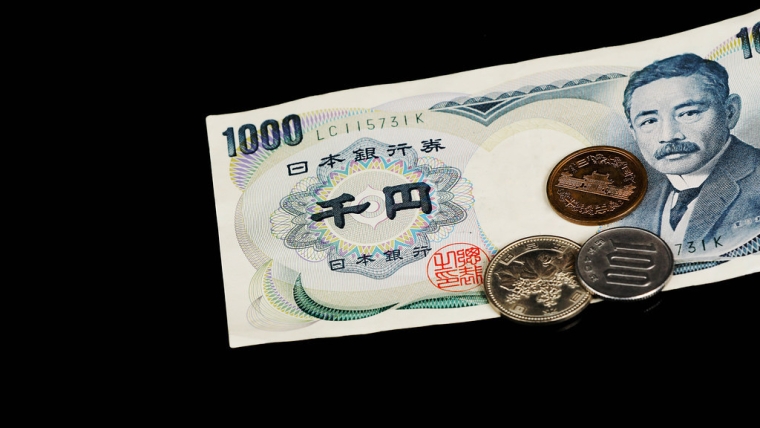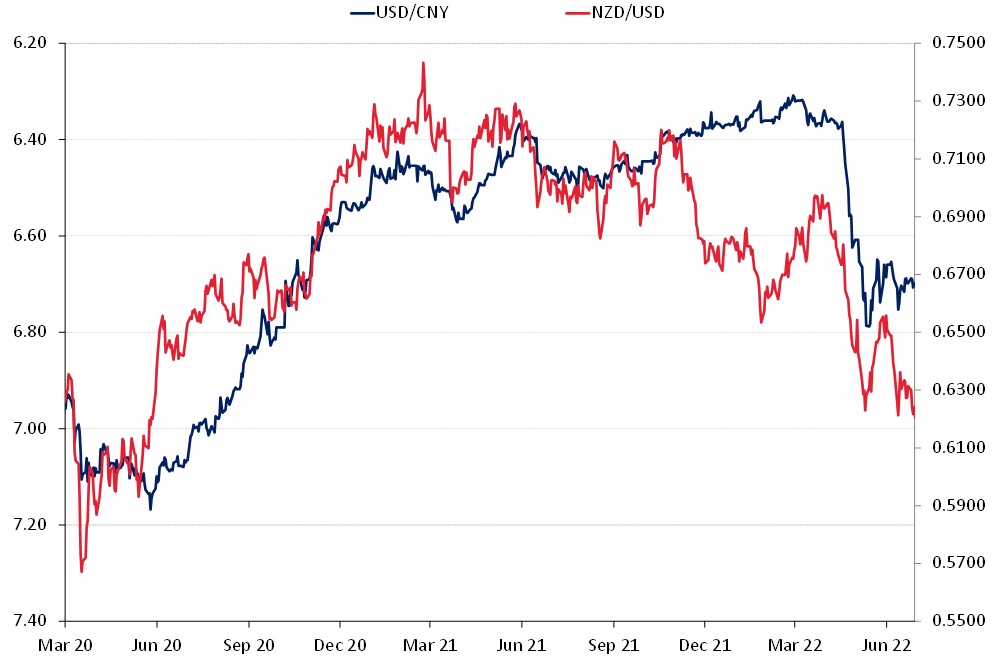
Summary of key points: -
- Why would the NZ dollar be on the same footing as the Japanese Yen?
- Strong US jobs numbers - the USD fails to respond
- China starts to roll out fiscal stimulus
Why would the NZ dollar be on the same footing as the Japanese Yen?
The juggernaut currency that is the US dollar rolls on to stronger levels against all currencies as global risk events of the pandemic, war, energy crisis, food crisis and high inflation disrupt economic activity.
The US economy is arguably as badly affected by the debilitating increases in inflation on household finances as all other countries. However, over recent weeks the Euro and UK Pound have come under considerable selling pressure in the markets as currency investors and hedge fund managers so no reason to buy or hold these currencies.
Both political and economic factors have piled up against the Pound, therefore a weaker exchange rate value is understandable and justified. The Euro has been beset by two major negatives, the Russians reducing gas supplies to Germany’s manufacturing plants and the European Central Bank (“ECB”) being far too cautious and hesitant in increasing their interest rates in the face of an 8.60% annual inflation rate.
The EUR has weakened against the USD from $1.0600 to lows of $1.0100 since the ECB signalled that their first interest rate lift for many a year was only going to be 0.25%. Just why they are being so tentative is difficult to fathom. Over the last two weeks both the Norwegian and Swiss central banks have increased their interest rates by 0.50%. The continuing depreciation of the Euro value is adding to the European inflation problem as oil is imported in US dollars. There has to be reasonable chance that the ECB realise that a 0.25% will mean nothing and they surprise market participants with a 0.50% increase when they next meet on 21 July.
Over the last three and a half months since the Kiwi dollar peaked at 0.7000 against the USD on 31 March, the USD has strengthened by 12% against the NZD to lows of 0.6150 last week. The US dollar has posted similar gains over the same time period against the Australian Dollar (10%), UK Pound (12%), Euro (10%) and the Japanese Yen (11.5%). When considering the position and attributes of all these economies, the current pricing by the FX markets that all these countries have almost equal economic challenges and outlooks vis-à-vis the US dollar seems totally out of whack with reality.
The FX markets have categorised the Kiwi dollar onto the same level as the Japanese Yen over recent months. However, the Bank of Japan refuse to tighten monetary policy and leave their interest rates at 0.0%, whereas the RBNZ was the first central bank to tighten policy last October and will lift the OCR another 0.50% this week to 2.50%. There is also a stark contrast in economic performance between Australia and Germany. Last month, the Germans recorded the first monthly trade deficit (imports greater than exports) since 1992. Australia posted a whopping A$15.9 billion trade surplus for the month of May, smashing prior forecasts of A$10.7 billion. Australia’s export volumes and dollars received are extraordinary and point to a future currency appreciation.
To lump the New Zealand and Australian economies at the same rating as Europe, the UK and Japan at this time is incomprehensible. The world currently faces an energy and food crisis. Europe, UK and Japan all import food and energy and thus are vulnerable to supply and are price-takers. Not a good position to be in. New Zealand and Australia export their surplus food and energy and therefore have to be considered to be in a much stronger position. The FX markets in selling the NZD and AUD down as much as EUR,GBP and JPY over recent months have seemingly ignored these fundamental differences between the respective economies.
The NZD and AUD are regarded and traded as “risk” currencies i.e. they are sold against the USD when US equity markets fall - “investor risk-off mode”. Both the Kiwi and Aussie dollars suffered concerted bouts of selling when the US equity markets were hammered in April and again in early June. However, US equity markets should now find some stability over their summer holiday period of the next six weeks as US interest rates are no longer increasing sharply, and over-leveraged investors have already been forced to sell out. On this basis, the NZD and AUD should find some buying support on their own account as discerning currency traders and hedge funds recognise that our economies are not in the same category as Europe, the UK and Japan. The Kiwi dollar and Aussie dollar have both been heavily over-sold at current levels of 0.6180 and 0.6860 respectively compared to other currencies, however it will require a change in sentiment and direction of the US dollar itself before we see any significant recovery.
Strong US jobs numbers - the USD fails to respond
Unfolding US economic data over recent weeks, both positive and negative, has not shifted the dial as far as the US dollar currency value is concerned. The US dollar has continued to make gains to above 106 on the Dixie currency index despite weaker than expected retail sales, housing starts, industrial production and manufacturing data through May and June. The economic lead-indicators all suggest an abrupt slowdown in economic activity and a higher probability of a recession ahead. Likewise, the US dollar failed to record further gains on Friday 8th July when the June Non-Farm Payrolls data produced a higher than expected 372,000 new jobs (prior consensus forecast were for +250,000). Employment numbers always lag other economic trends by several months, so perhaps it was not too surprising that employment has not as yet slowed up.
It seems that the FX markets are not prepared to bet against the mighty US dollar until they receive the official word from the Federal Reserve that US inflation has peaked, and further interest rate increases over and above what is already priced-in by the interest rate markets will not be necessary. It is quite common in these monetary policy adjustment cycles that the two to ten year market interest rates are already falling when the central bank is still executing the last of the short-term interest rate increases. Expect to see this played out over coming weeks, with the markets exuding mounting pressure on the Fed to moderate their stance as evidence comes through that US inflation has peaked. The US June inflation numbers being released on Wednesday 13th July will be pivotal in this respect. Consensus forecasts are for a 1.10% increase for the month lifting the annual headline inflation rate from 8.60% to 8.80%. Core inflation (excluding food and energy prices) is expected to increase by 0.50%, leaving the annual core inflation rate unchanged at 6.00%. Inflation increases below the forecasts will be negative for the USD and vice-versa.
China starts to roll out fiscal stimulus
China’s Ministry of Finance is considering allowing their local government bodies to sell US$220 billion of special bonds over the second half of this year, a serious acceleration of infrastructure spending aimed at restoring the Chinese economy. Policy makers are seeking to boost their economy which has been hit by Covid lockdowns and a housing slump. We have been expecting improving Chinese economy data to shore up the values of the NZD and AUD. Whilst the infrastructure spend will not boost the economy immediately, these initiatives in China have an economic impact a lot faster than what you would imagine.
The People’s Bank of China have stabilised the controlled Yuan exchange rate against the USD at 6.7000 over recent weeks. They require continued stability in their exchange rate to assist their economic recovery. The NZD/USD and AUD/USD exchange rates closely track the USD/CNY rate. As the chart below depicts, there is evidence that the NZD has been sold down too far compared to the USD/CNY level at 6.7000.

Daily exchange rates
Select chart tabs
*Roger J Kerr is Executive Chairman of Barrington Treasury Services NZ Limited. He has written commentaries on the NZ dollar since 1981.
9 Comments
We are hopelessly dependent on imported fuel. What was our largest industry (tourism) has been smashed. Our economy has only grown in the last 10+ years through population growth (migration). Household wealth is mostly in the form of housing, with ridiculous nominal values entirely dependent on a wall of debt borrowed overseas, in a rising rate environment.
The $NZ is not undervalued. It's been coasting on a wave of inexplicable optimism as part of the 'everything bubble', as a risk asset (from a US perspective). It has a long way left to fall.
I couldn't have said it better myself. New Zealand has been politically mismanaged(perhaps by design) into being a cash cow milked by foreign entities. The average New Zealander has so much debt that they no longer have control of their own future. The country is completely beholden to those importing our products. We are now the prey... and we will be consumed.
Add to that the 180 degree turn by the current government on China. The Chinese govt. is not at all pleased with Jacinda's recent comments. Not a good idea to annoy your biggest trading partner.
Who you trade with, and your foreign policy should be wholly independent. We should be able to criticise anyone and if they stop importing our product so be it. The problem is chasing their business through greed and expecting that they won't ask for support of their dastardly deeds at some point in the future. It's naive in the extreme or perhaps corrupt. Everywhere else in the world where foreign powers seek favour, they lead with buying off the politician, followed by deals that seem at the outset to offer a free lunch. But in reality it is sovereignty that has been traded.
Have our politicians really been so naive...
NZ banks lend in NZ Dollars which they create, they don't lend borrowed money, the loanable funds myth of mainstream economics.
https://www.bankofengland.co.uk/working-paper/2018/banks-are-not-interm…
they don't rely on international money markets at all?
Genuine question
Not to finance their lending. Banks need money for three things, capital, liquidity and reserves. Reserves can only come from government but if a bank is short of reserves it may need to borrow them from from another bank or the Reserve Bank. They need to hold enough liquidity to cover a month of trading under Basel 111 banking regulations and they need to hold capital of 10% of lending.
Banks need to maintain their deposit ratios relative to lending or they will run out of reserves to operate their exchange settlement accounts. Due to us running current account deficits some NZ Dollars will end up in foreign hands, perhaps the banks borrow back some of these to maintain their deposit ratios. If the government runs budget surpluses this will also run down the reserves that the banks hold causing them to seek more.
Economist Bill Mitchell explains on his blog here why banks need deposits. http://bilbo.economicoutlook.net/blog/?p=14620
Another question would be why would the NZD be on the same footing as the AUD?
Because of our huge reserves of gas, iron ore and lithium, I guess. <sarc>
That said, despite the padding that gives them, it's also a potential curse - Aus has one of the least complex/diversified economies in the world.

We welcome your comments below. If you are not already registered, please register to comment
Remember we welcome robust, respectful and insightful debate. We don't welcome abusive or defamatory comments and will de-register those repeatedly making such comments. Our current comment policy is here.